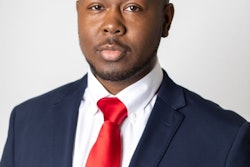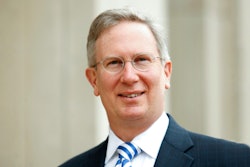From the view of his office across from the nation’s Capitol building in Washington, it is hard to believe the man dressed in a suit with an official government lapel pen affixed to his coat was the same man who, as a college student, had been spat on, beaten and cursed by racist thugs, and arrested and jailed more times than he’d like to remember while crusading to end racial segregation in America.
Looking around his office, one wouldn’t have to wonder if U.S. Congressman John Lewis’s story is true. It’s filled with pictures documenting his college days as a civil rights activist and history books that recount his story. Now, one can hear Lewis’s story straight from the man himself in his new non-fiction paperback graphic novel, “March: Book One”, the first part of a trilogy that vividly recounts, in action-packed comic strip format, the heroic and oft-times frightening chapter in American history.
The 120-page graphic novel recounts when Lewis and fellow classmates cut classes to risk their lives to participate in weeks of peaceful demonstrations protesting forced, legalized racial segregation in Nashville, as did students in several other cities across the South. Those students eventually attracted more students and adults supporters from around the country to their cause. They protested racial discrimination in interstate commercial transportation, public eating places, movie theaters, public restrooms and water facilities.
To address that dazed look most young people give when asked about the civil rights era, Lewis agreed to an idea suggested by Andrew Aydin, an avid comic book enthusiast and Congressional staffer who grew up in Lewis’s Georgia congressional district. Aydin suggested Lewis tell his story in comic book form to reach young people.
With the artwork of New York Times best-selling cartoonist Nate Powell, Lewis and Aydin hope telling the story of Lewis and the role of college students in the civil rights movement, via graphic illustrations with text, will be as appealing and inspiring to students and teachers of today as any fictional hero.
“I hope this book will inspire another generation to speak up, speak out and make some noise,” Lewis says of his new offering, published by a small Georgia publisher that focuses on graphic illustration fiction novels aimed at young readers.
“This book is primarily for a new generation that didn’t grow up and live through the ’60s,” Lewis says. “It says to them, ‘There were some young people and some not so young people who were inspired to find a way to get in the way to make trouble, necessary trouble,’” Lewis adds, referring to the civil rights demonstrations. “We were simple, ordinary young people who saw a problem and decided to do something about it. The book is a reminder to today’s young people [that] ‘you too can do something.’”
Since its release late last summer, “March” has reached The New York Times best-seller list, been reviewed by The Washington Post and drawn interest from history teachers and history groups around the country. Marquette University in Milwaukee, Wisc. has placed “MARCH” on its freshman reading list. Several other universities are considering doing the same.
“It’s an inventive approach to telling an important story,” says Deborah Heard, former editor of The Washington Post. “It will reach audiences that might not turn to a big memoir or history book.”
Finding ground with historians
Indeed, the innovative pitch of “March” is aimed at people who know very little about American civil rights history.
However, the authors’ approach could raise some issues for pure historians, despite being based on the recollections and words of Lewis, a primary source on the topic.
“It would be good to have it in the [university] library,” says history professor Linda Wynn of Fisk University, one of the institutions prominently mentioned in the graphic novel.
The book could offer insights to readers unfamiliar with the civil rights movement and involvement of college students, she says.
By the same token, Wynn says, the new work is “not a scholarly book” based on the standards historians use in assessing the academic quality of works. For example, she explains, the book is not written as a college-level scholarly work. “Does it fit the college requirement, the definition of being scholarly?” she asks.
That raises the possibility that strict academics will acknowledge the book, but may not give it their highest endorsements in a scholarly context, Lewis and Aydin recognize. Still, they say it’s worth the challenge, given the chance to spread the student civil rights story to new learners.
Last fall, in California, Lewis and Aydin were greeted at the Comic-Con convention, the major comic book enthusiasts gathering, with a standing ovation. Several people told Lewis he was their “superhero,” having learned of his story.
“[‘March: Book One’ is] a good eye opener,” says attorney Charles Brewer, chairman of the book committee of the Association for the Study of African American Life and History (founded in the 1920s by Howard University historian Carter G. Woodson as the Association for the Study of Negro Life and History).
“It’s a good thing for anyone who knows no more than the beating on the [Edmund] Pettus Bridge,” says Brewer, referring to the bloody confrontation between the Alabama police and Lewis and his peers as they were trying to stage a protest march in Selma, Ala.
As for the style of the book, Brewer says he sees reading comic books as healthy. He remembers reading Classic Comics in his high school years, noting that they featured cartoon illustrations of the major classics in literature. “I grew up on Classic,” says Brewer. “When I had a tough book to read, I read a Classic first,” he adds, explaining the comic version helped him better understand and enjoy the original version of a work.
Lewis says he is still focused on his work as a lawmaker. Time permitting, the book gets his attention on free nights and weekends. Aydin says he has the same rule in order to minimize overlap between the work they have to do and the past-time work they want to do.
As for the entire story, expected to run more than 500 pages, Lewis says it will “continue to tell the rest of the story through the Freedom Rides, the Mississippi Summer [Project], the March on Washington and the Selma to Montgomery march.”
“It will be about the successes, the pain, the hurt, the suffering, the story of the movement,” Lewis says. “And, it will inspire other people to tell their story.”


















